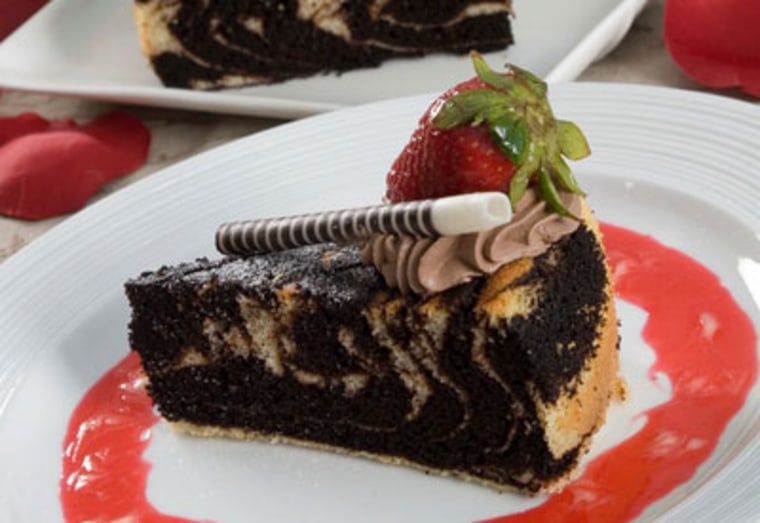If you've ever found yourself not just wanting but needing a gooey slice of pizza, you know what it's like to crave food. Understanding what's behind your cravings or how to stop yourself from repeatedly overdoing it, however, is a little more difficult.
"If you're able to manage a craving," says Roger A. Clemens, a spokesman for the Institute of Food Technologists who has 30 years of experience with food and public health, "you should win a Nobel Prize."
It's long been thought that cravings arise from a nutritional deficit. But people crave salty foods such as potato chips all the time, and few are salt-deficient. In fact, the National Institutes of Health estimates that Americans currently eat one and a half to two times the amount of sodium per day recommended by U.S. Dietary Guidelines.
So where else do cravings come from?
Researchers are still working on that answer, but it appears cravings may develop after we eat a combination of fats, carbohydrates, sugar, flavor and texture that's pleasurable. In a study in which participants were given chocolate and a capsule containing all of the ingredients of chocolate, only the chocolate satisfied people's cravings. It's natural to want to replicate that experience or high.
Along those lines, a 2004 brain-imaging study by the Philadelphia-based Monell Chemical Senses Center and the University of Pennsylvania School of Medicine showed that food cravings activated three regions of the brain: the hippocampus, insula and caudate, three areas also reported to be involved in drug cravings.
Marcia Pelchat, a food psychologist with Monell, says the mechanism behind a food craving likely evolved to make people take care of themselves and motivate them to get food. That might explain why people tend to crave high-calorie foods. They're trying to meet their bodies' needs, even though few people today are in need of so many calories.
Another popular theory is that cravings are hormonal. According to her research, Pelchat says nearly all college-aged women experience cravings, compared to about 70 percent of young men and women over 65, and 65 percent of men over 65. As they age, women also tend to crave fewer sweets, but research has not established that hormonal changes are the cause, Pelchat says.
Diet don'ts
If your cravings are out of control and you want to do something about them, think twice before taking action. Dieting, ironically, can make a food craving even worse. Pelchat's research has shown that going on a monotonous diet — think all-protein or all-juice — increases the likelihood of cravings.
Restricting yourself to certain kinds of foods, bland foods or even foods you don't like triggers the hedonic appetite, says Mary Boggiano, a psychologist and associate professor with the University of Alabama at Birmingham. As a result, the brain causes us to crave what we like, especially if, like most Americans, you are used to enjoying a variety of foods.
A history of dieting and a high stress level may make a person even more sensitive to a craving, causing them to overeat once they get a bite of what they've been longing for, Boggiano says. Ultimately, the key to successfully cutting back is to maintain variety.
"If you look at the most effective diets, they don't leave anything out," she says.
Turning the tables
Researchers are currently looking into whether it's possible for people to learn to crave foods they don't like, which could someday help junk-food lovers stomach healthy foods.
In the meantime, experts say there are a few methods for controlling cravings that are worth a try.
A Flinders University study, published in the June 2007 issue of the Journal of Psychology: Applied showed that visual and olfactory distractions were more effective than auditory ones in reducing people's food cravings. In other words, rather than just trying not to think about ice cream, try actively thinking of, watching or smelling something else.
Other tricks include keeping what you crave off the counter or completely out of the house. You may still think of the food, but you won't come across it accidentally in the pantry, and it'll be harder to access it. Likewise, if you know driving past the doughnut shop on the way to work will set you off, change your route. If you're always binging in front of the refrigerator, try eating somewhere else in the house or consider a redesign.
"Minimizing your food cues by maybe redecorating the kitchen or moving the fridge are not totally crazy ideas," Pelchat says.
If nothing seems to work, you might as well indulge — a little.
"I have the best piece of chocolate I can get at the end of a meal," says Barbara Rolls, professor of nutritional science at Penn State and author of "The Volumetrics Eating Plan." "It signals to me that I've finished eating. Some days I have more than one piece, but generally that's it. I end up eating less and I feel satisfied."
